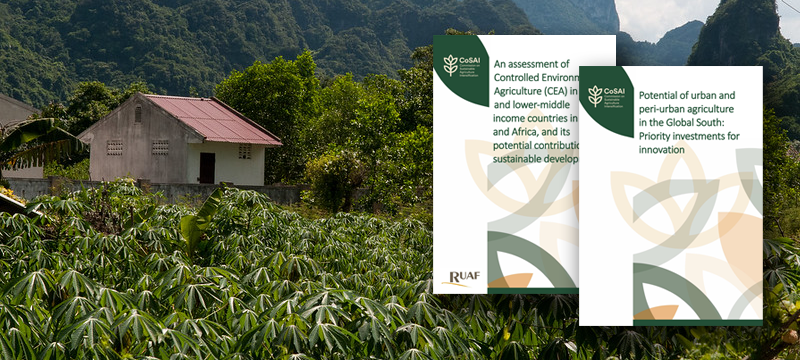
The future of urban and peri-urban agriculture in the Global South: setting priorities for future innovation investments
By 2050, it is projected that nearly 70% of the global population will live in urban areas – up from 55% today. How can towns and cities be fed sustainably? And what does this urban growth mean for innovation priorities? A study of urban and peri-urban agriculture (UPA), commissioned by CoSAI, addressed these questions.
The study shows how investment in innovations in agri-food systems can contribute to reversing the burdens caused by rapid urbanization.
Find out more in this CoSAI policy brief.
Actions neededInvestment in:
|
Controlled environment agriculture
The UPA study showed that technical innovations should include a focus on controlled environment agriculture (CEA) to provide year-round vegetable production in many locations. CEA can contribute to sustainable development, for example through reduced use of land, water and inputs. However, to scale up CEA in the Global South sustainably and equitably, innovations are needed in policy, technology and business practices.
A complementary study on CEA, conducted by the RUAF Global Partnership on Sustainable Urban Agriculture and Food Systems, considers the different technologies available and recommends which technologies merit investment, and under which conditions. Findings and actions needed are summarized in an associated CEA policy brief.
Call to action
WWF’s ‘Policy, Plates, and Planet’ sets out specific actions for municipalities, national governments, international institutions and urban practitioners to transform urban food systems. The actions are an example of a roadmap to change towards a more equitable and sustainable food system.
